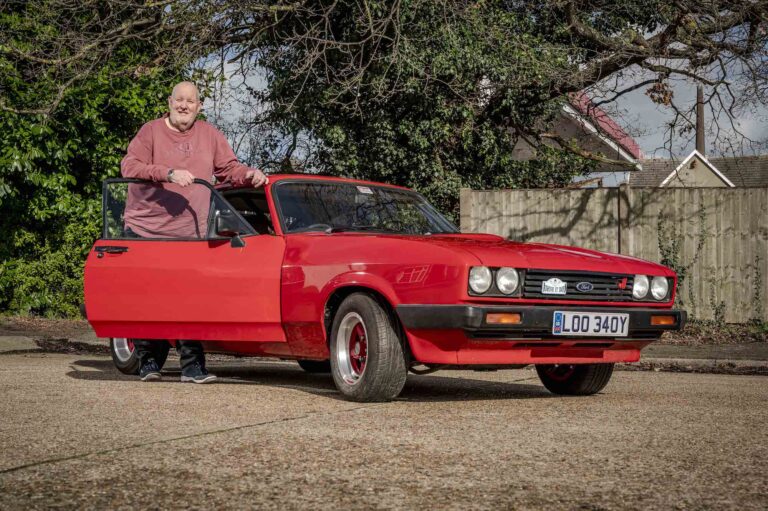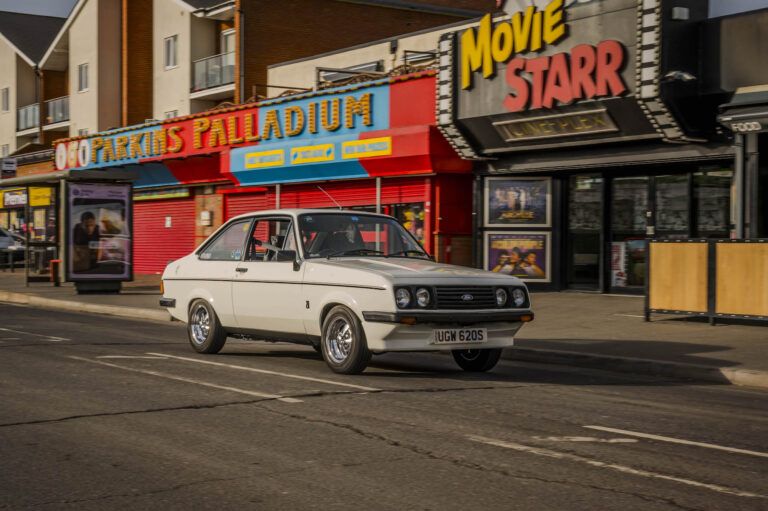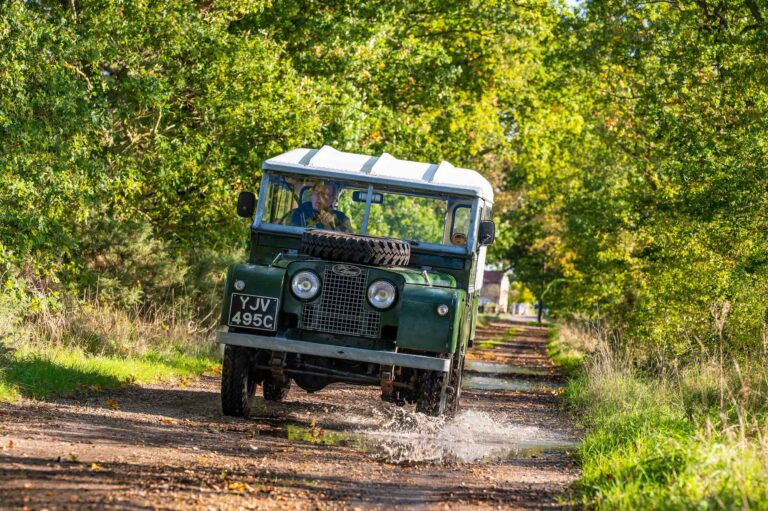Few cars of any era are as beautifully-proportioned as the Giugiaro-styled Alfa Romeo 1750 GT Veloce.
Back in 1970, CAR magazine described it as “sheer beauty”, and “one of the prettiest yet practical designs ever to be built by a major manufacturer”.
And while it was those perfectly-sculpted lines that first persuaded Malcolm Sprason to part with £600 for his 1971 example more than four decades ago, he quickly discovered that the rest of the car was pretty special too.
“The shape, the body and the styling – they really knew what they were doing when they designed that,” he says at his home in the Norfolk countryside, the bright red Alfa sitting pretty on the drive outside.
“When I bought it I knew little about the cars, but I knew they had special engines. They weren’t very common at the time, but once I’d got one I started looking out for them and getting interested in the history of the brand.
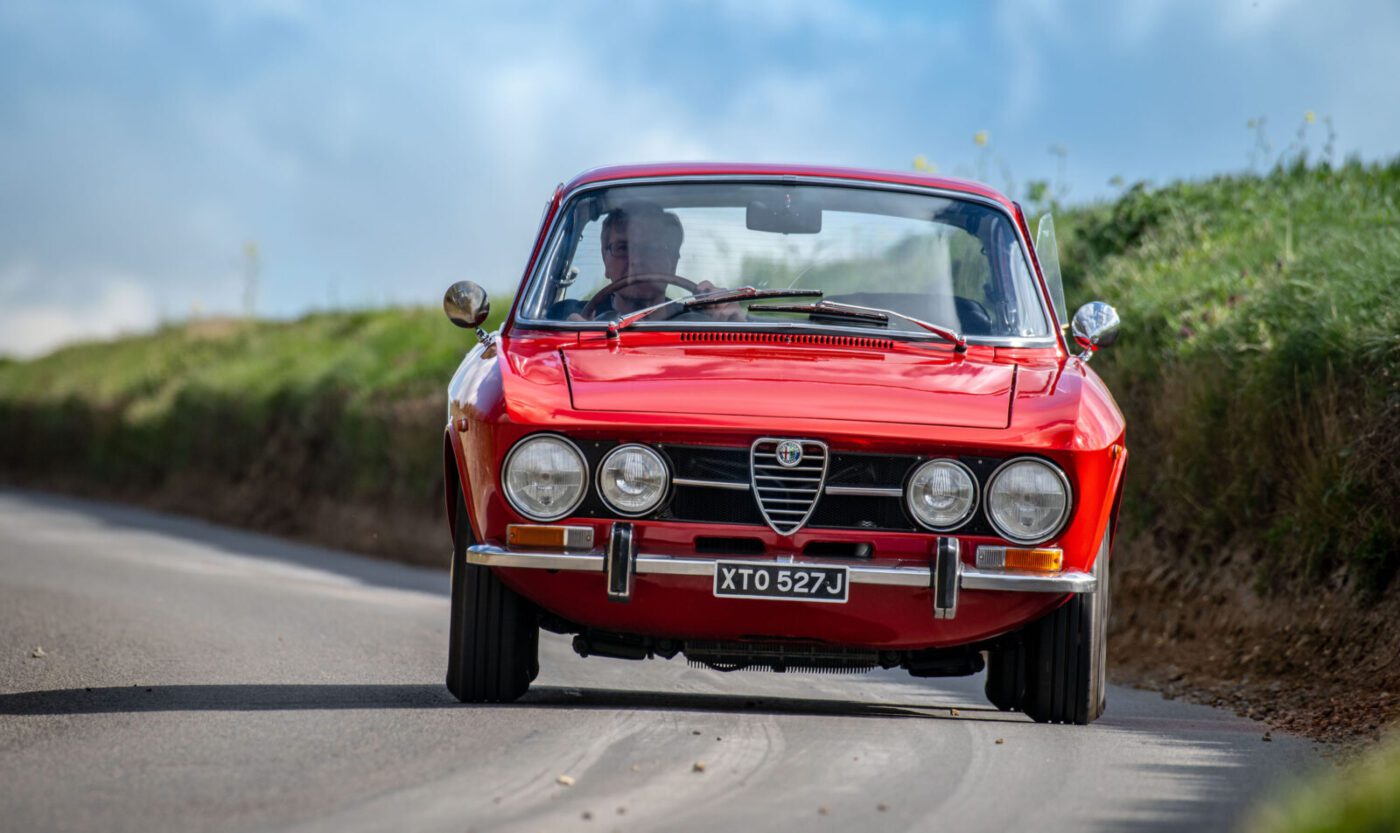
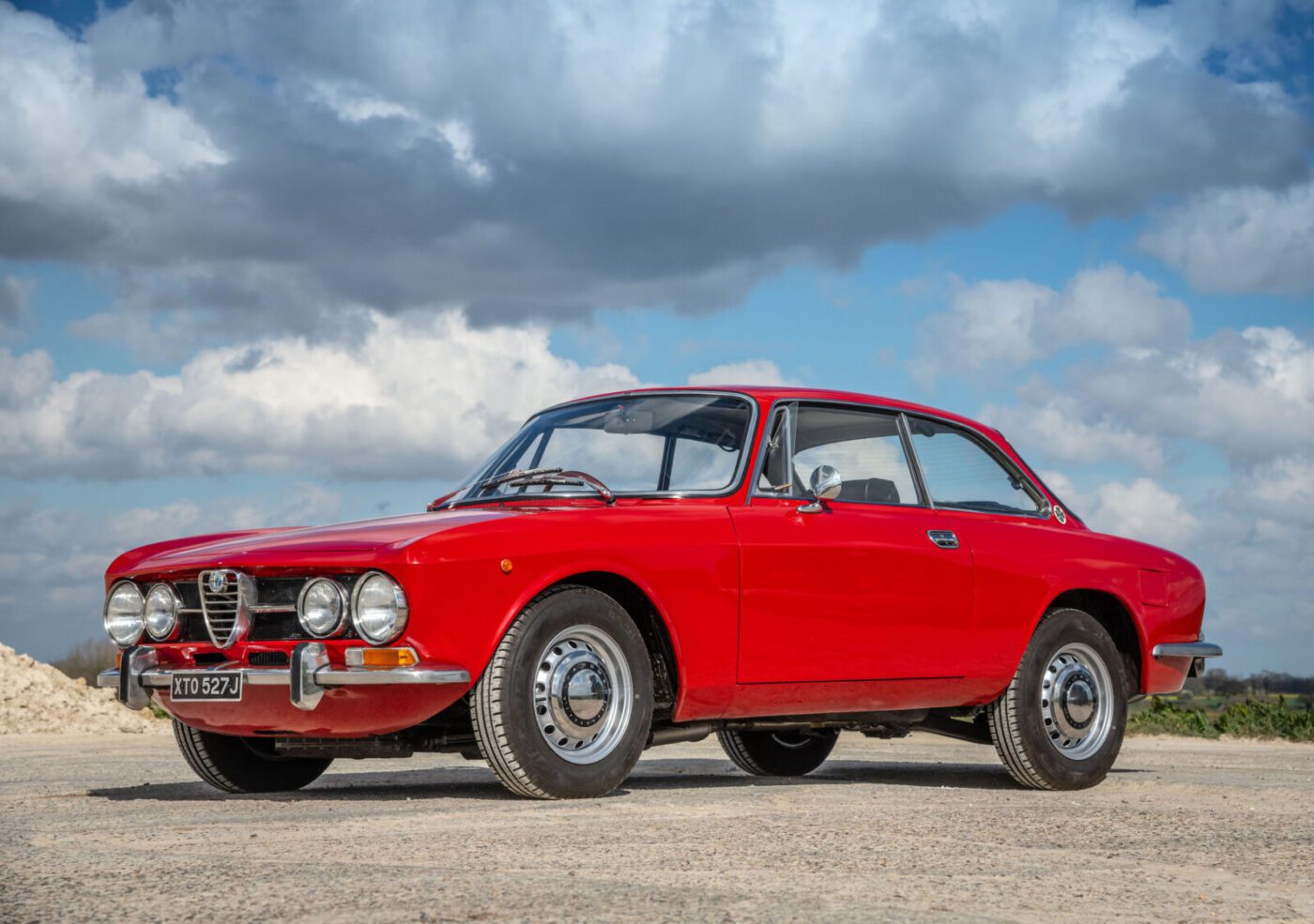
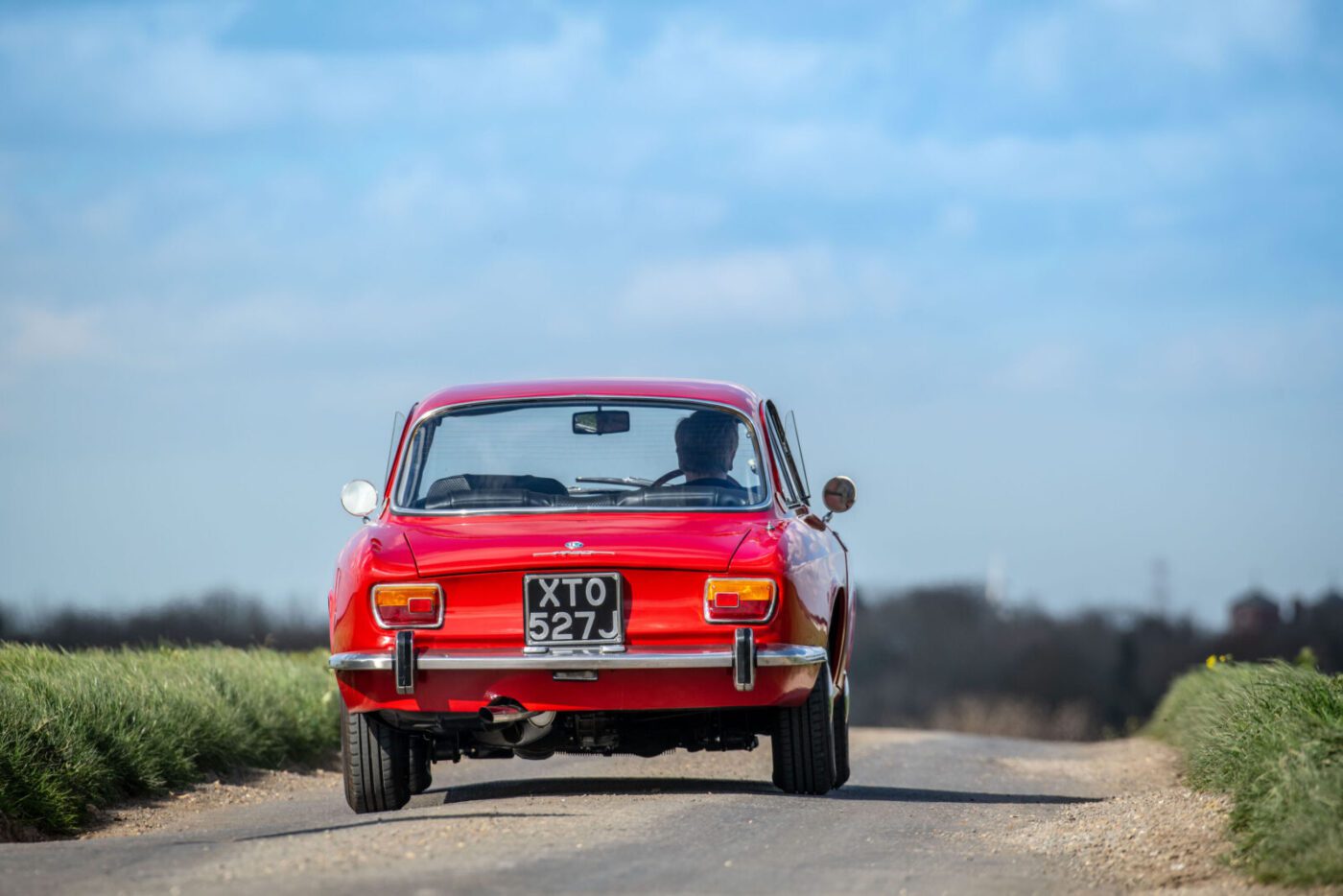
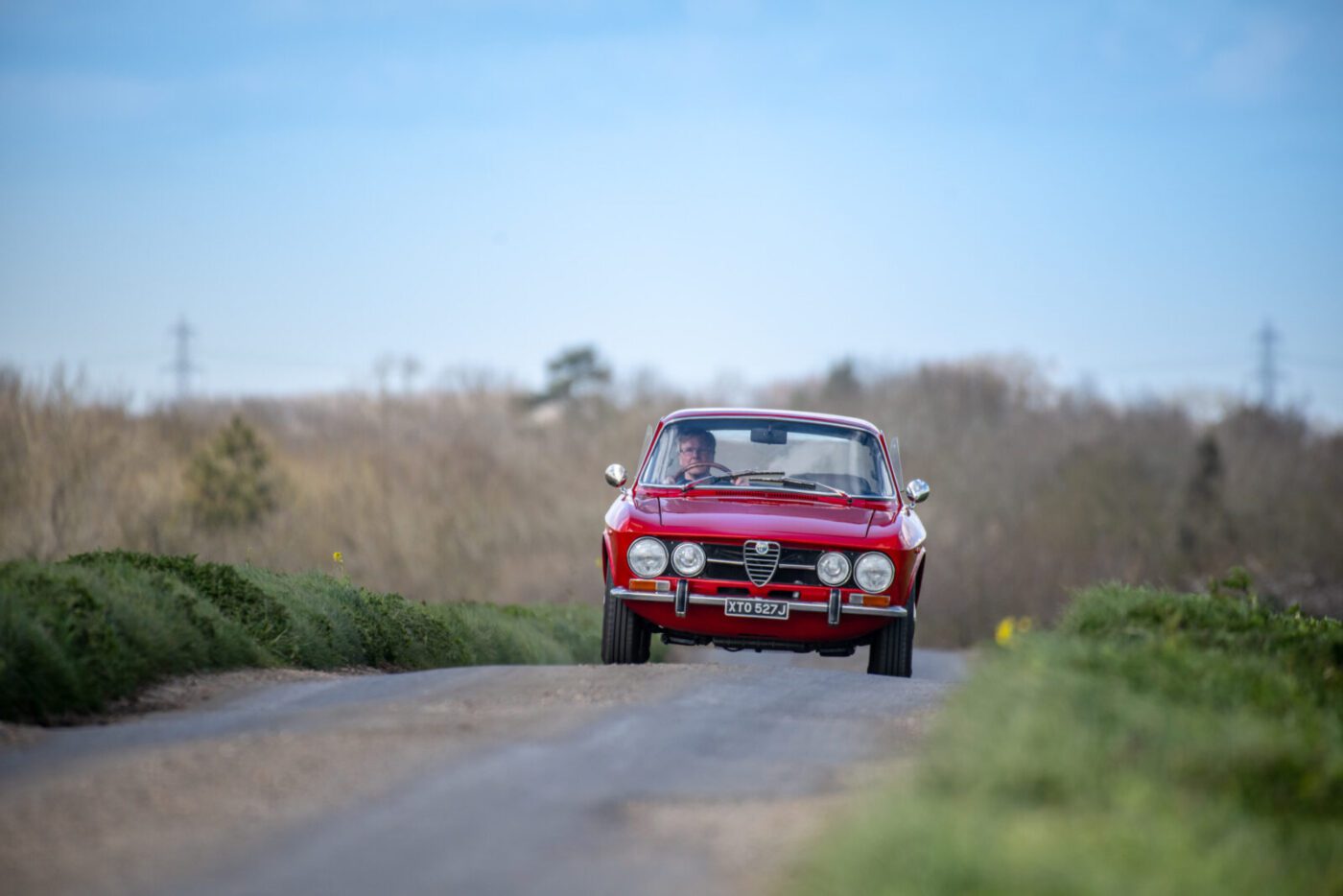
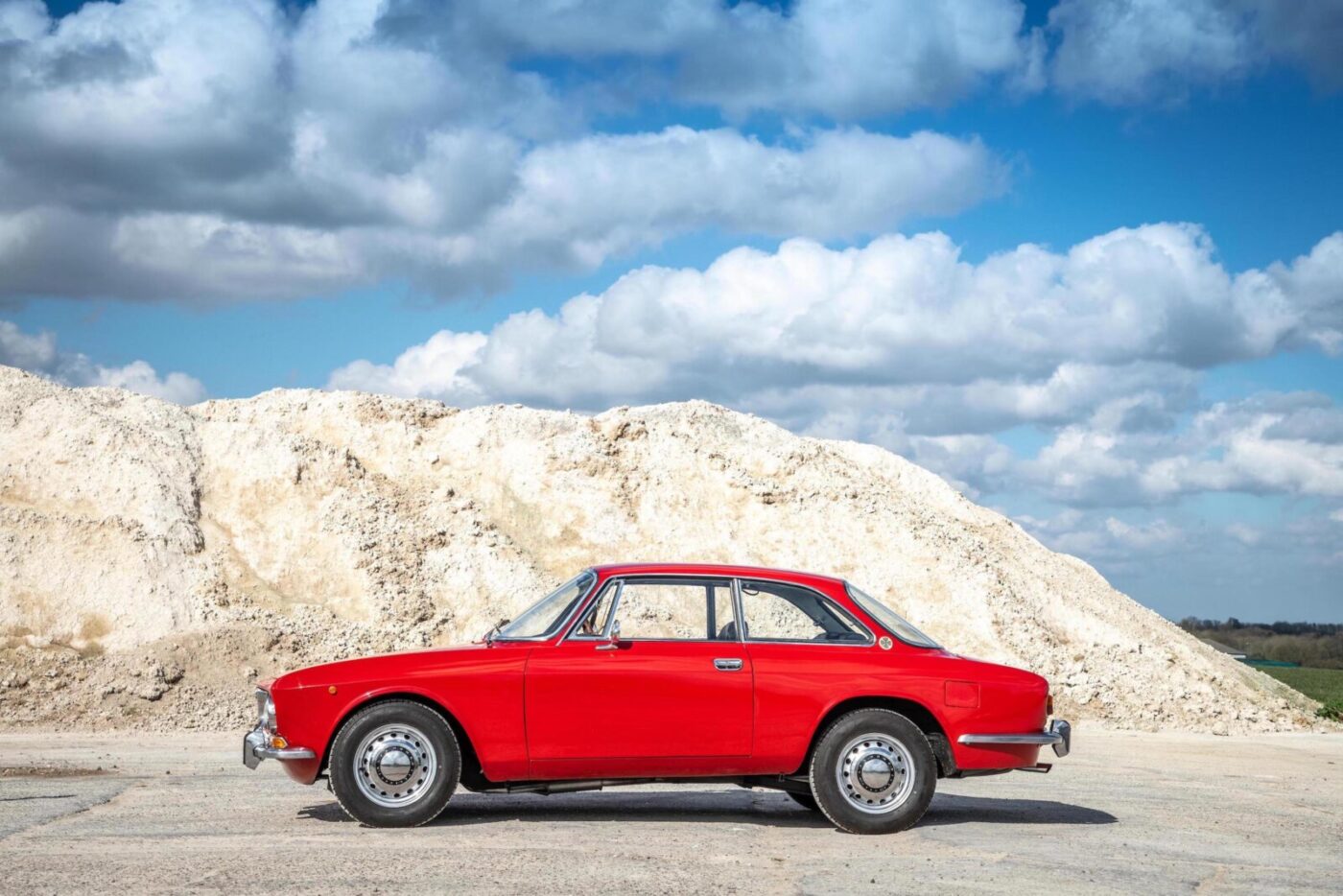
Put British cars to shame
“They were quite advanced for the time – four wheel disc brakes, an all alloy, twin cam engine, five speed gearbox. It put British cars of the era to shame.”
Metallic green when he bought it in 1977, the Alfa has since had two restorations – one reasonably superficial, including a colour change, and one full strip-down and rebuild.
And not once in those 42 years has the car let Malcolm down, despite some backside-numbing commutes of more than 250 miles when the chartered engineer was living in Norfolk but working in Blackpool – or, indeed, living in Birmingham but working in Norfolk. It’s complicated…
“It was totally reliable,” says Malcolm, now 73. “Looking back it was probably not very comfortable. I’m the wrong height, 6ft 1in, but what choice have you got? It was the only car I had.
“It was made for people with short legs and long arms. Later on I moved the seat back, but then realised I couldn’t reach the steering wheel, so had to fit an extra boss to move it closer.”
Even when company cars took over as daily transport, initially a mark three Ford Escort, Malcolm, an inveterate, but very much amateur, car restorer, kept hold of the Alfa.
“It never occurred to me to sell it,” he says. “I always thought I would keep it and use it as a fun car, a weekend car.”
READ MORE ABOUT SOME OF OUR GREATEST CLASSIC CARS WITH

A series of articles on our Cult Classics site.
Pride and joy
Which is exactly what it is now, Malcolm’s wife, Pam, describing it as “his pride and joy”.
Malcolm already owned the Alfa when he met Pam, and the car played a small role in the pair getting together.
“Everybody seemed to have MGBs, but a mate had a TVR, which seemed a little bit different,” says Pam. “I said to this guy, ‘I like your car’. He said ‘if you like this you wait until you see Malcolm’s car’. I thought ‘I’d better go and see this guy’.”
Malcolm jokes: “She mostly thought it involved wealth!”
As the years went by it became clear that Malcolm would never part with his beloved Alfa, and Pam got used to sharing her man with a charming little Italian.
“It’s like Malcolm and the GTV come as a package,” she says. “I have no sway on this whatsoever. If I go in the garage I have to breath in. ‘Don’t touch the car!’ It’s a bit of a precious thing for him.”
Originally from Birmingham, Malcolm started work as an engineering apprentice at an electrical company, buying a Lambretta Li150 at the age of 17 to get to work and back.
His first car was a 1964 Austin A30 – “my brother’s hand-me-down” – a four-door model in black with an 803cc engine producing a meagre 29bhp.
“My brother bought another car, and mum and dad found some money, about £50,” he says. “It was a good little car, it had been looked after by my brother’s father in law, who had had it from new.”
Next came a 997cc mark I Morris Mini Cooper, bought from the first owner but featuring a dodgy gearbox.
“I took it back to the garage because the synchro wasn’t working,” says Malcolm. “They said they’d had a recall on that so rebuilt the gearbox for me. I ran that for a long time and repainted it twice in different colours. You do those things when you’re young.
“I fitted sports seats and wide wheels, but did nothing to the engine really. In those days you thought 55bhp was quite quick!”
Like many people in the 1960s and ‘70s, tinkering with their cars was born out of necessity – of course, they were also a whole lot easier to work on than modern machines.
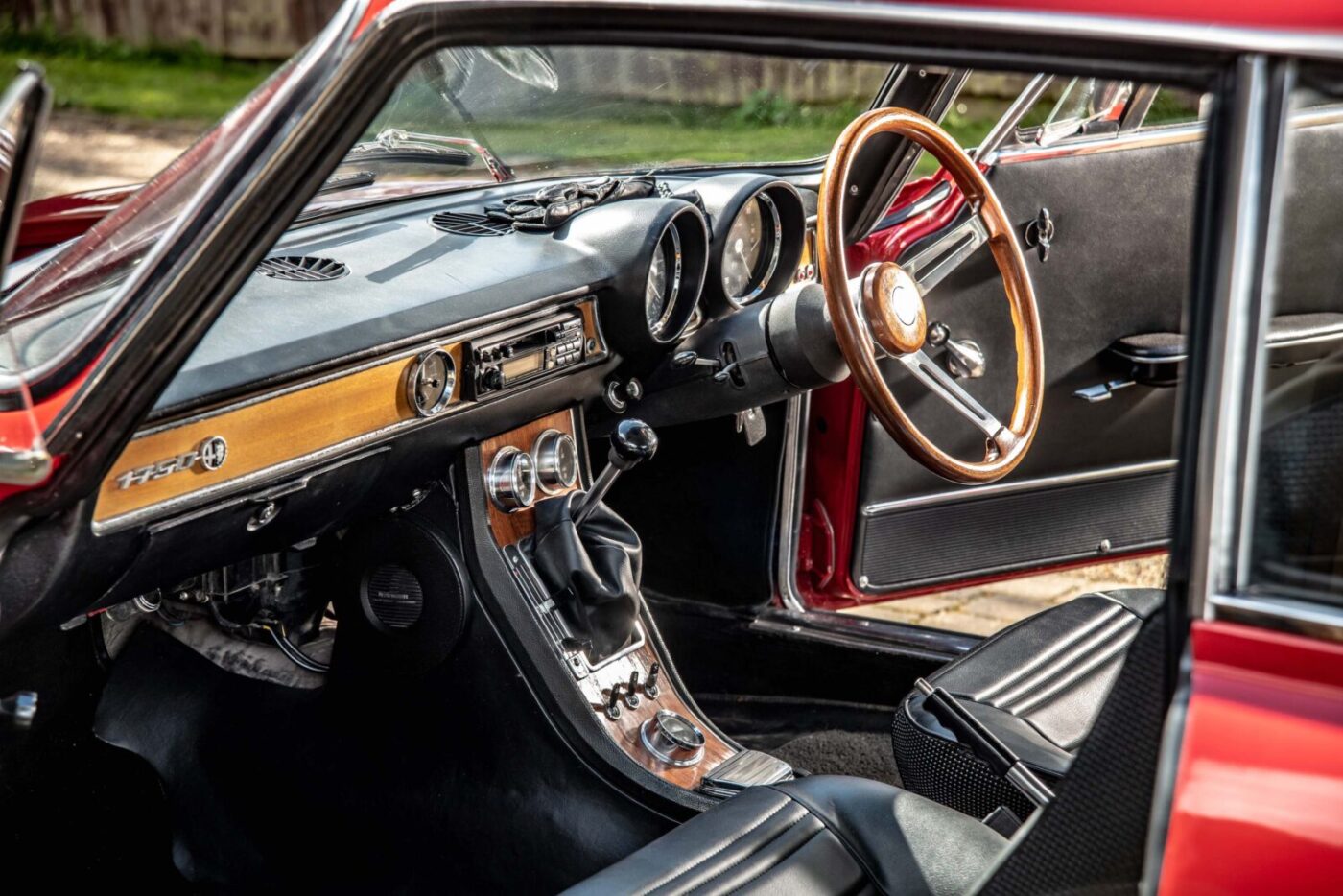
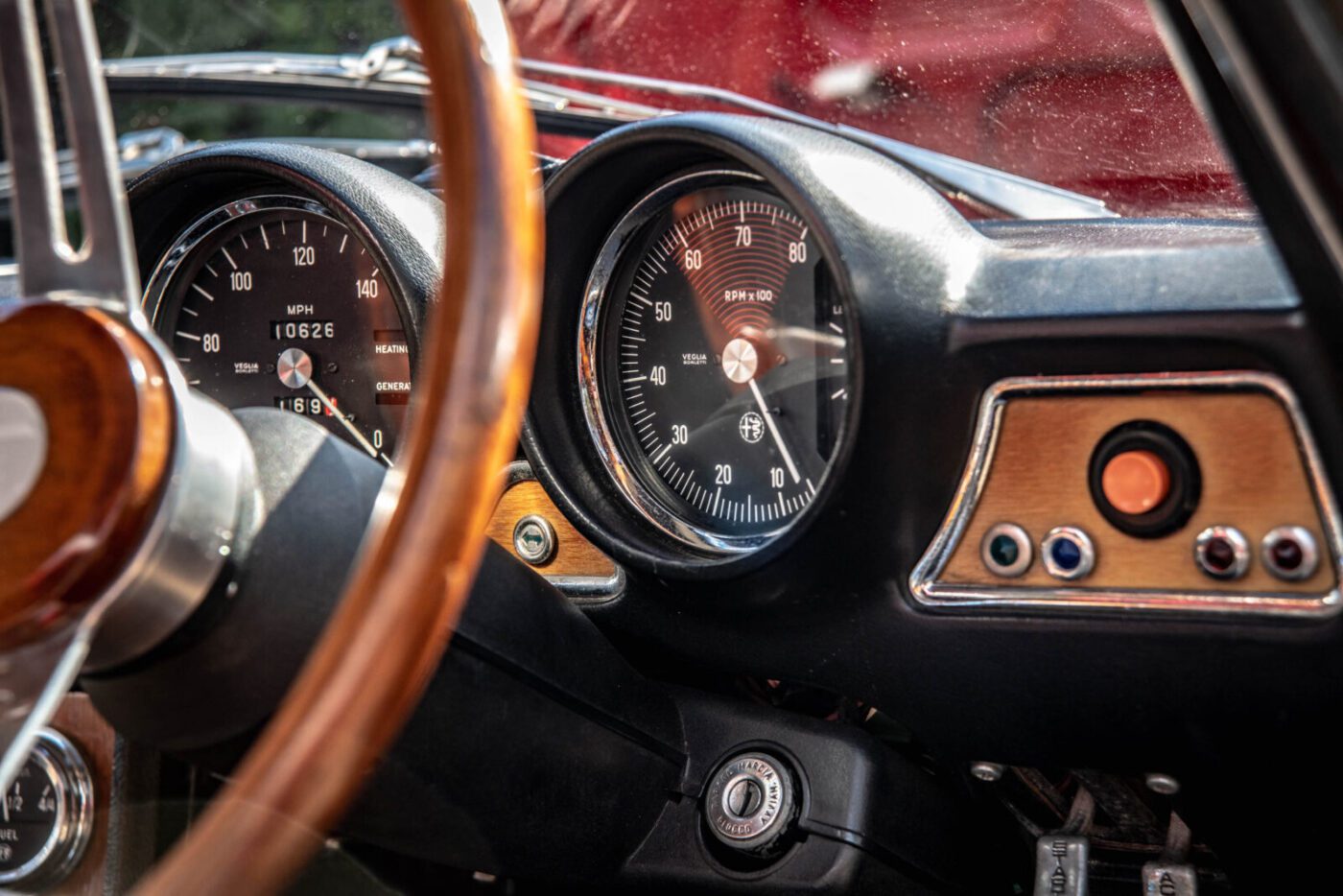
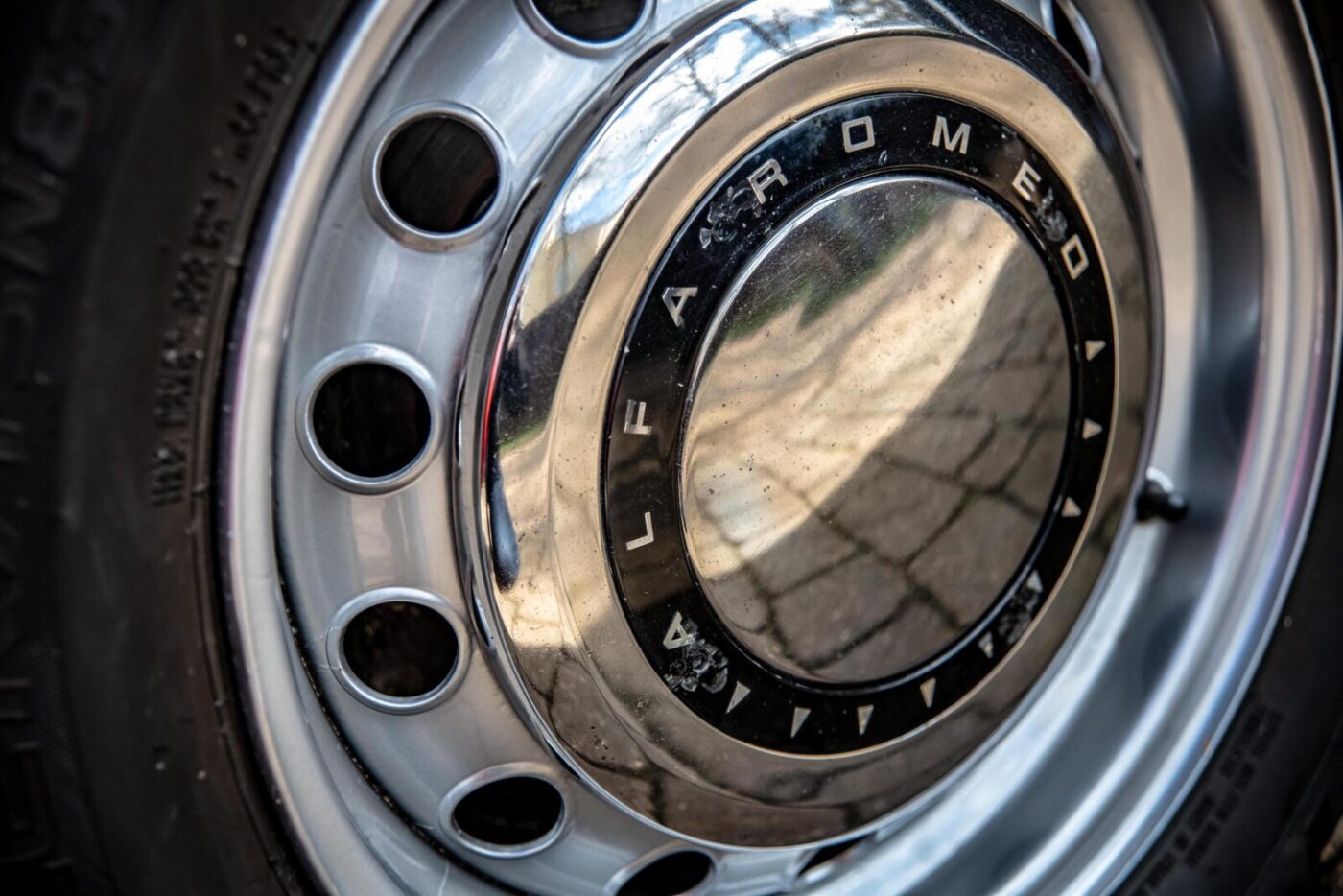
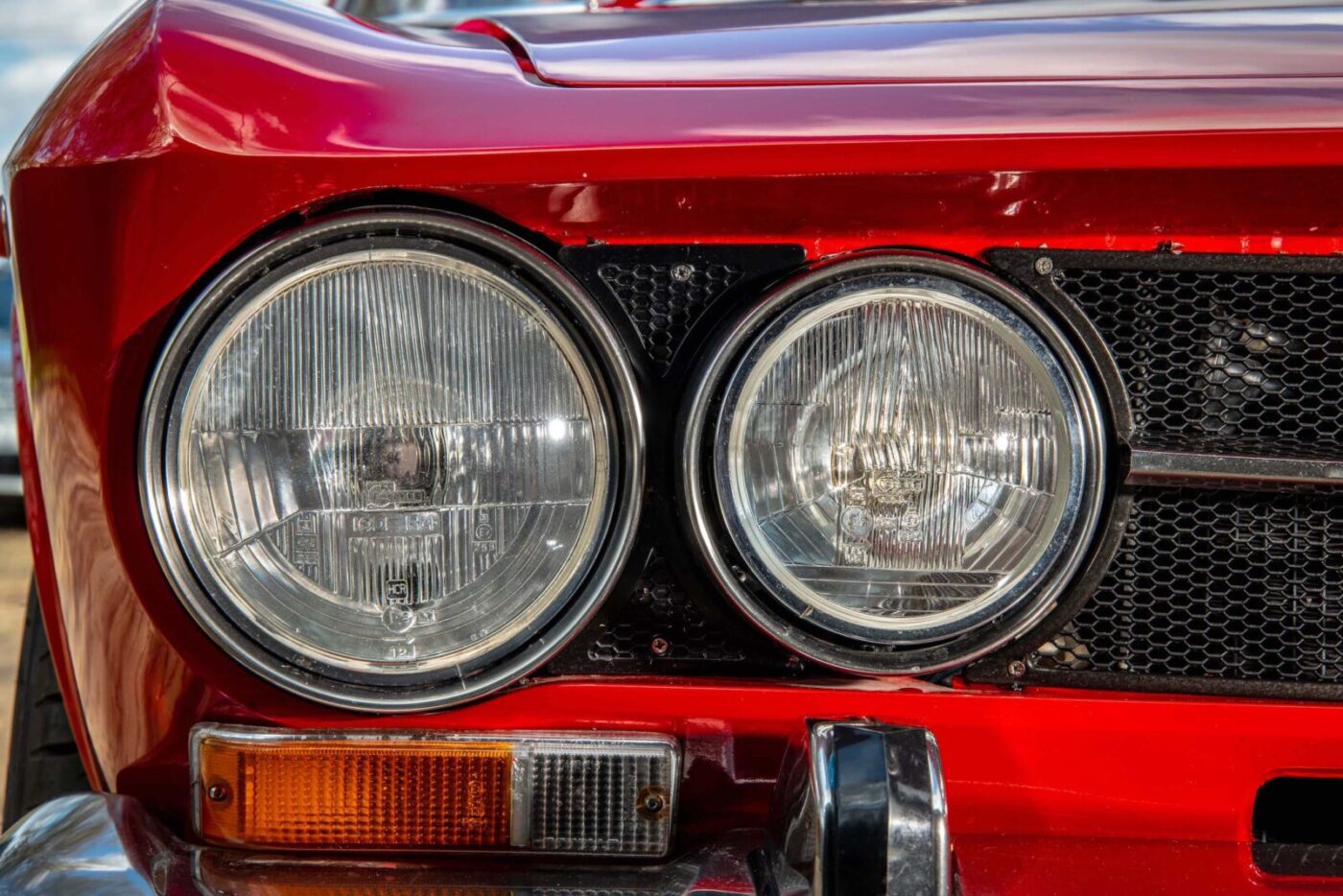
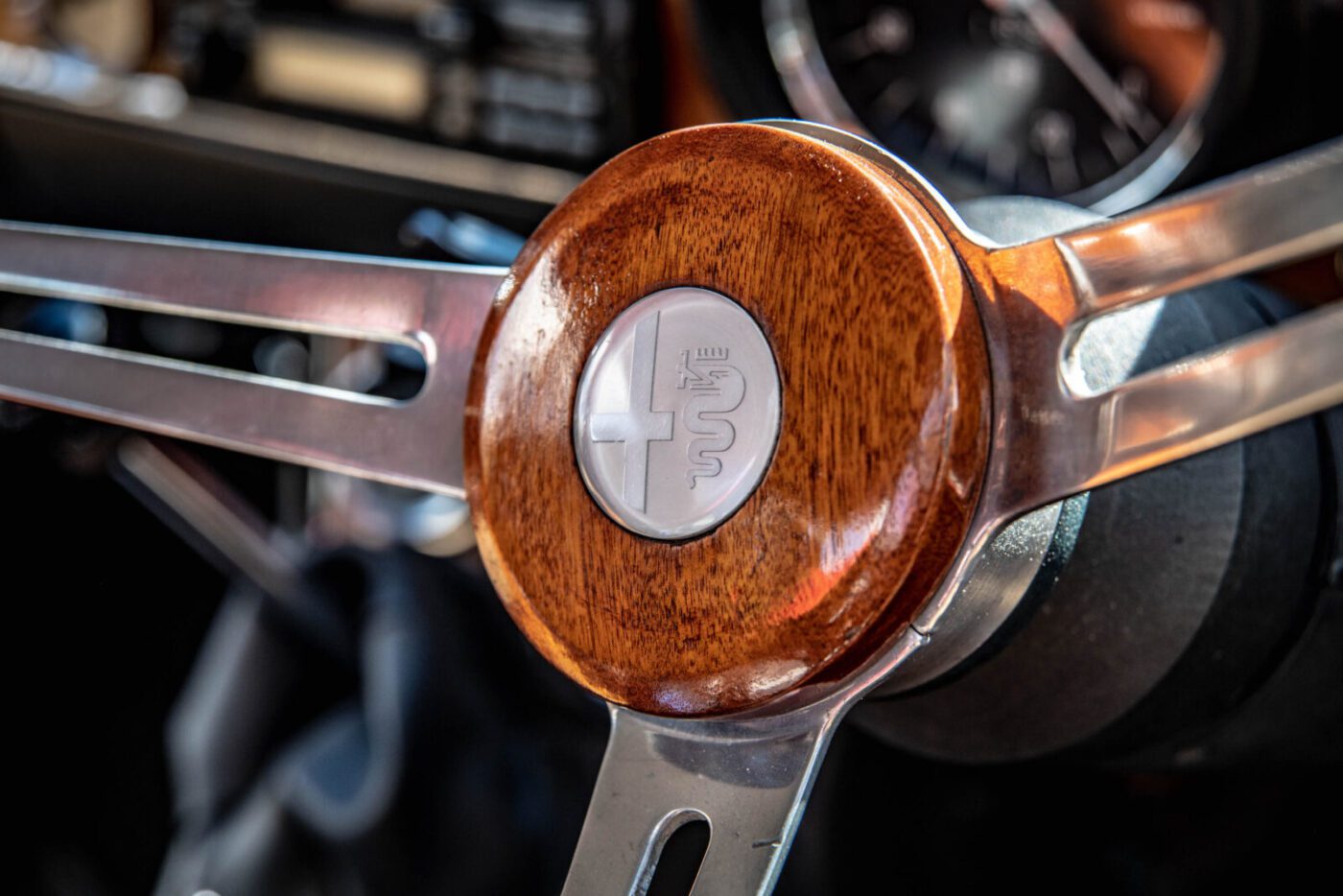
A learning curve
“Most of us were into cars,” says Malcolm. “And most of us could not afford to take cars to garages – we had to fix them ourselves. There were always people to advise you. When things needed doing, you had to do them yourself – it was a learning curve.”
When the Mini was sold, it was replaced by a Maxi that needed some restoration work – “a very nice, comfortable car,” according to Malcolm.
An accident-damaged, Dutch-made DAF 33 also joined Malcolm’s home for convalescing cars, bought for £200 or £300 from a friend.
“It was very low mileage – the first time I had ever had a nearly new car,” he says. “It was very unusual, and was great fun.”
Then fate intervened, and a chance remark from a neighbour saw Malcolm, 31 at the time, set off to fulfil his motoring destiny.
“A neighbour of mine who worked with a sheet metal worker at Wednesbury said to me: ‘Eric’s got this car, you ought to have a look at it because you are a car enthusiast’,” he remembers.
The car in question was a six-year-old Alfa Romeo 1750 GT Veloce, first owned by a headmistress and by now superseded by the less dainty Alfetta GTV.
81.5% of customers could get a cheaper quote over the phone
Protect your car with tailor-made classic car insurance, including agreed value cover and discounts for limited mileage and owners club discounts

Something different
“I knew nothing about them, but it seemed a bargain at £600, and something different, so I bought it,” says Malcolm. “Then you find out all the little things that need doing, but I thought ‘I’ll learn how to repair it as I go along’. Just go for it and see what happens.
“In those days most cars, not just Italian cars, were a bit fragile bodywise. The joke with these was that you should not complain about the body rust, because when you buy them you are only buying the engine and they gave you the body for free!”
The 1750 GTV, part of the 105 series of Alfas, was Bertone stylist Giorgetto Giugiaro’s first major project for Alfa Romeo, and his design flair was married to an advanced mechanical set-up that didn’t come cheap.
“There weren’t many of them about because it was about £2,000 to buy new, and an E-Type Jag was more or less the same,” says Malcolm.
“Considering the power and performance of an E-Type, you had to really want one of these to buy one new.”
As the Alfa was Malcolm’s only means of transport at the time, any repairs would have to be running ones and, within a couple of years, the little car was pressed into some serious service.
By now a chartered engineer, Malcolm landed an exciting job in Norfolk in 1979, working on chassis development for the DeLorean project at Lotus’s headquarters in Hethel.
With a house to sell in Birmingham, that meant a 150-mile plus journey to Norfolk – before the dualling of the A11 – and the return journey on a Friday evening.
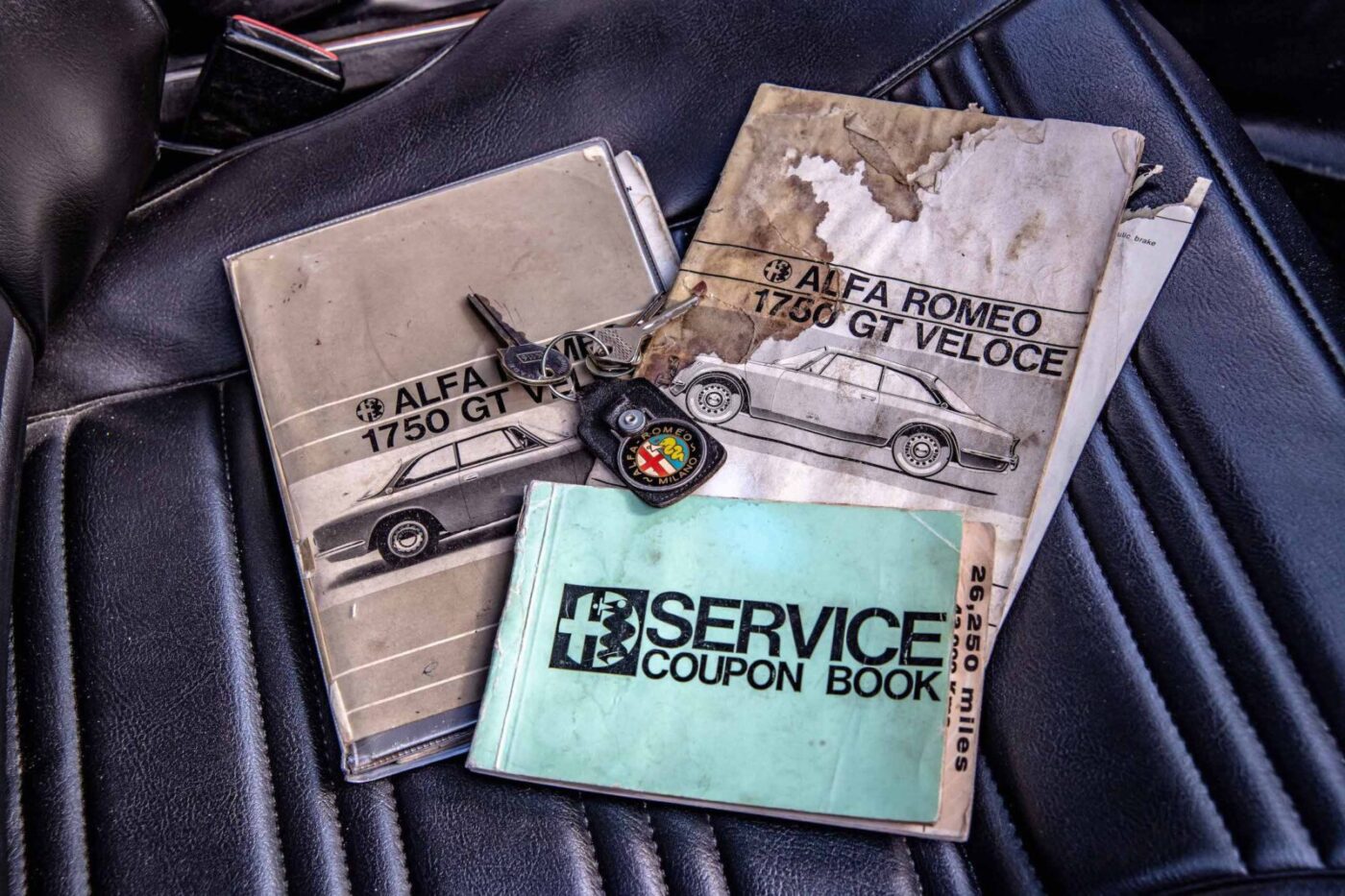
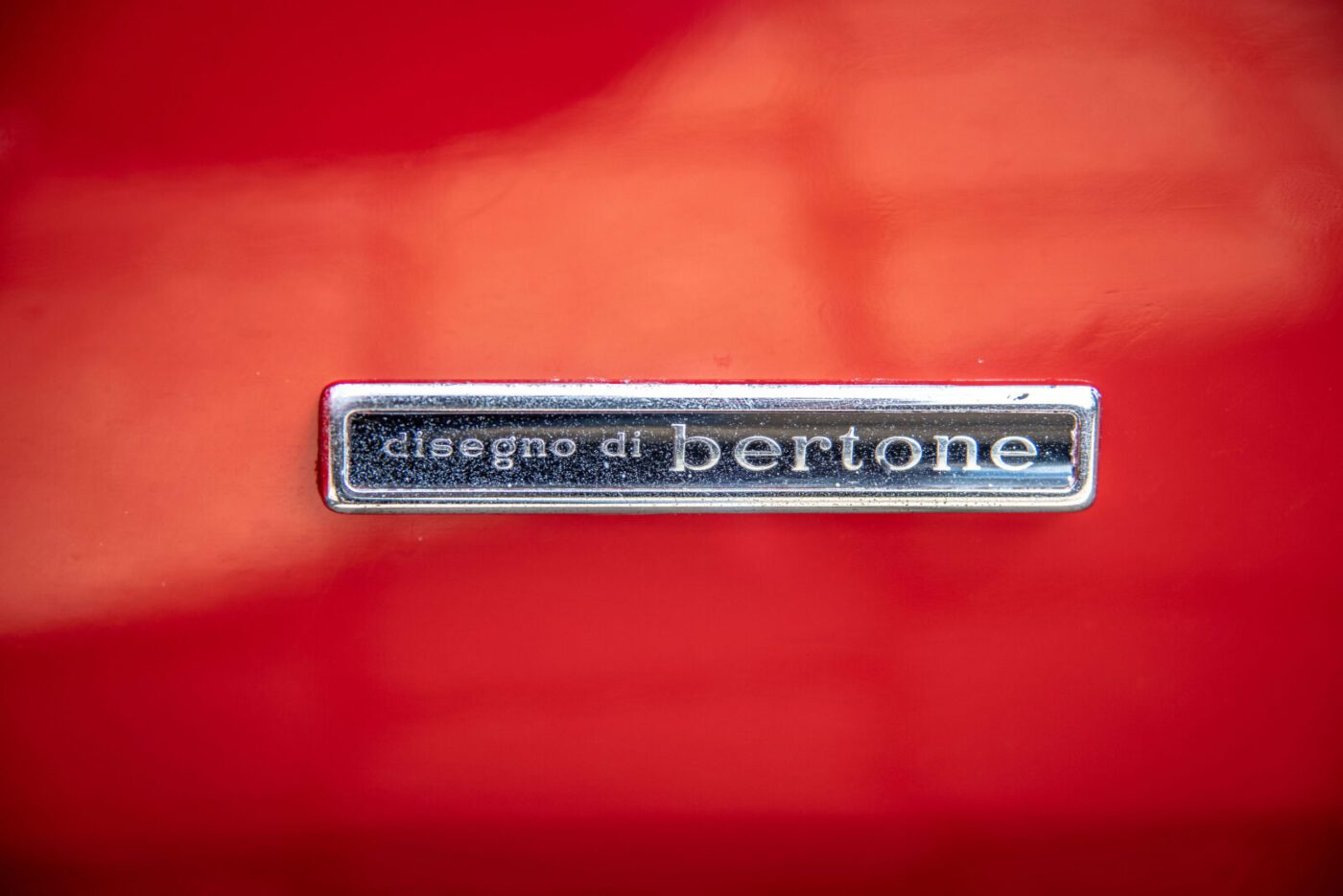
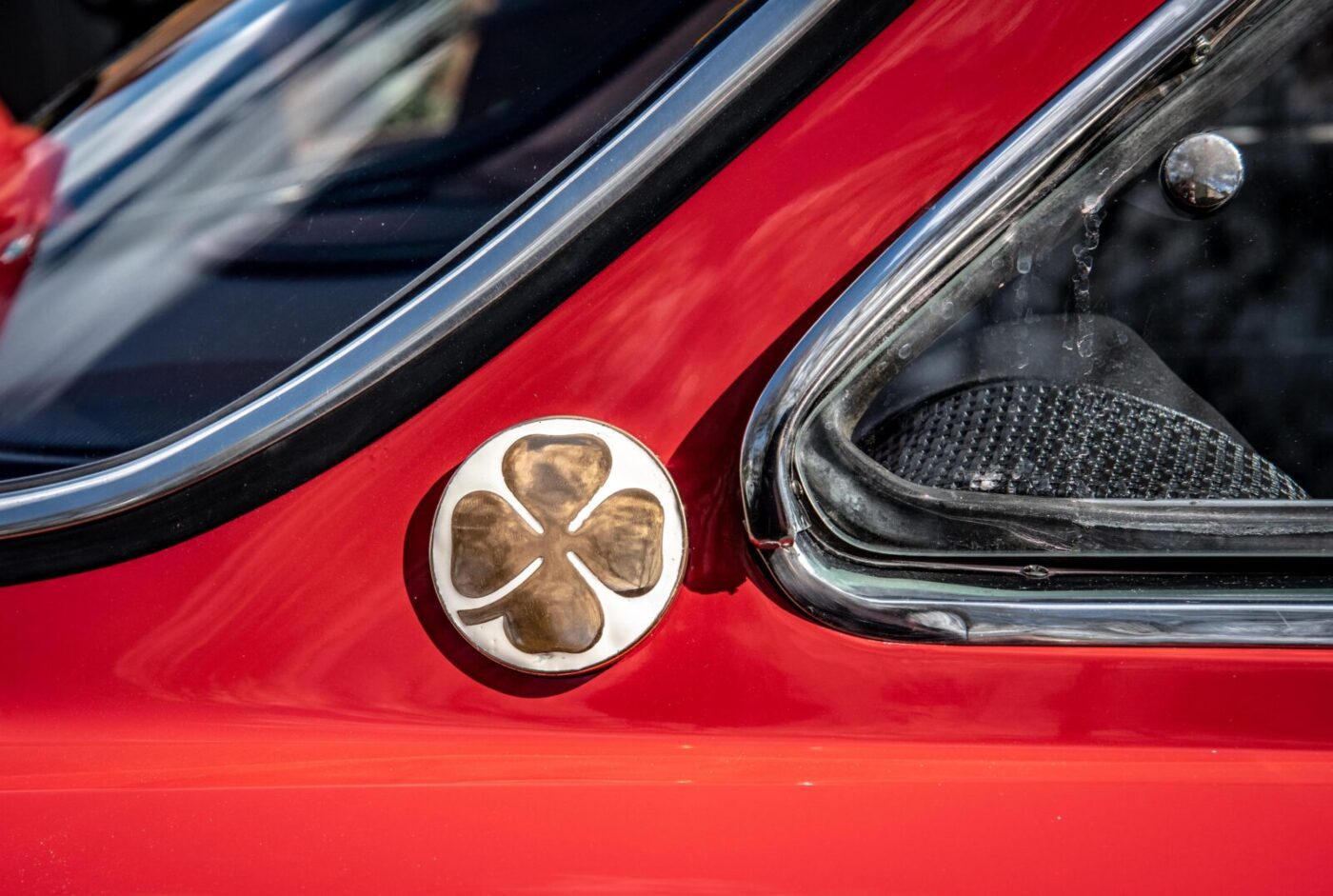
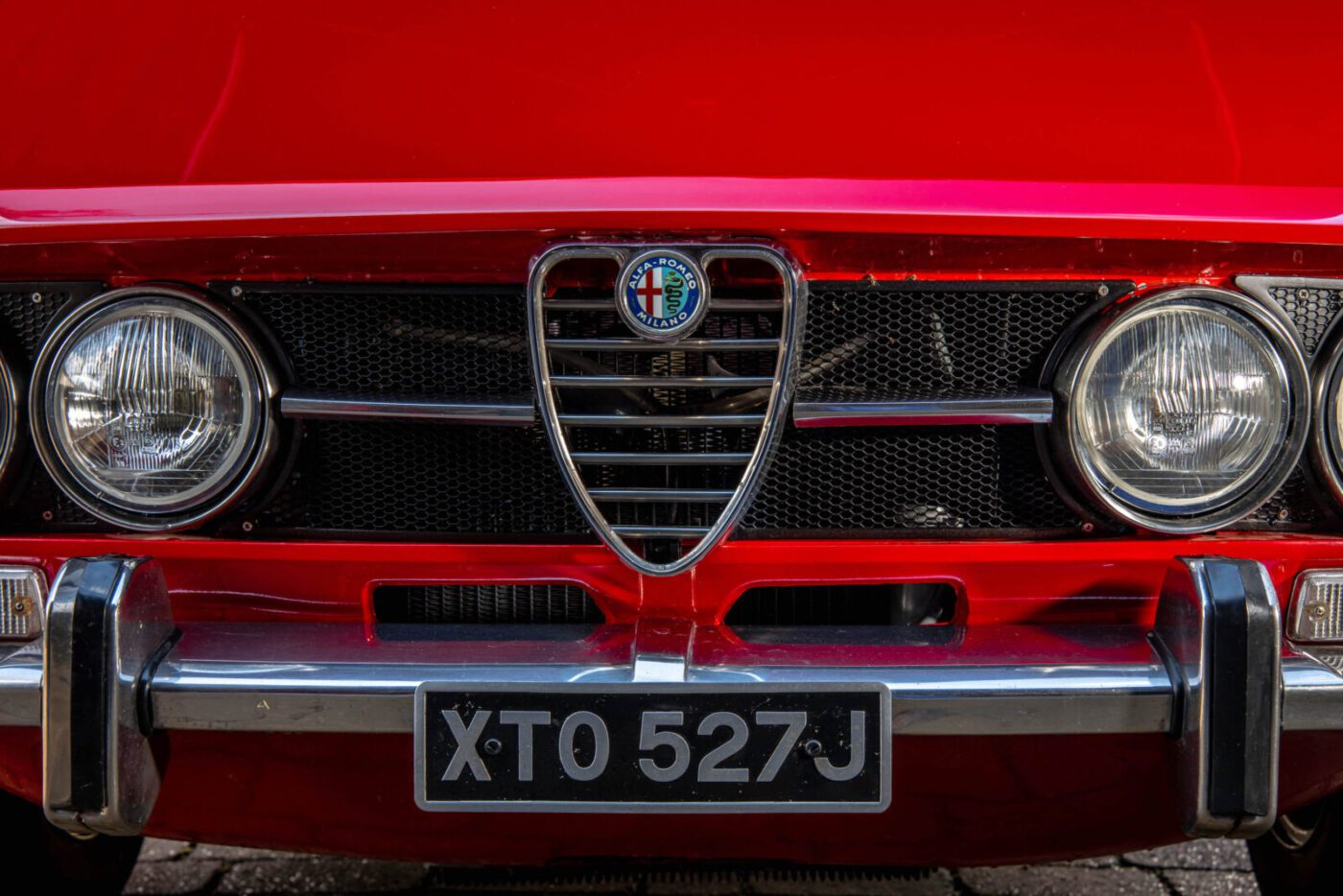
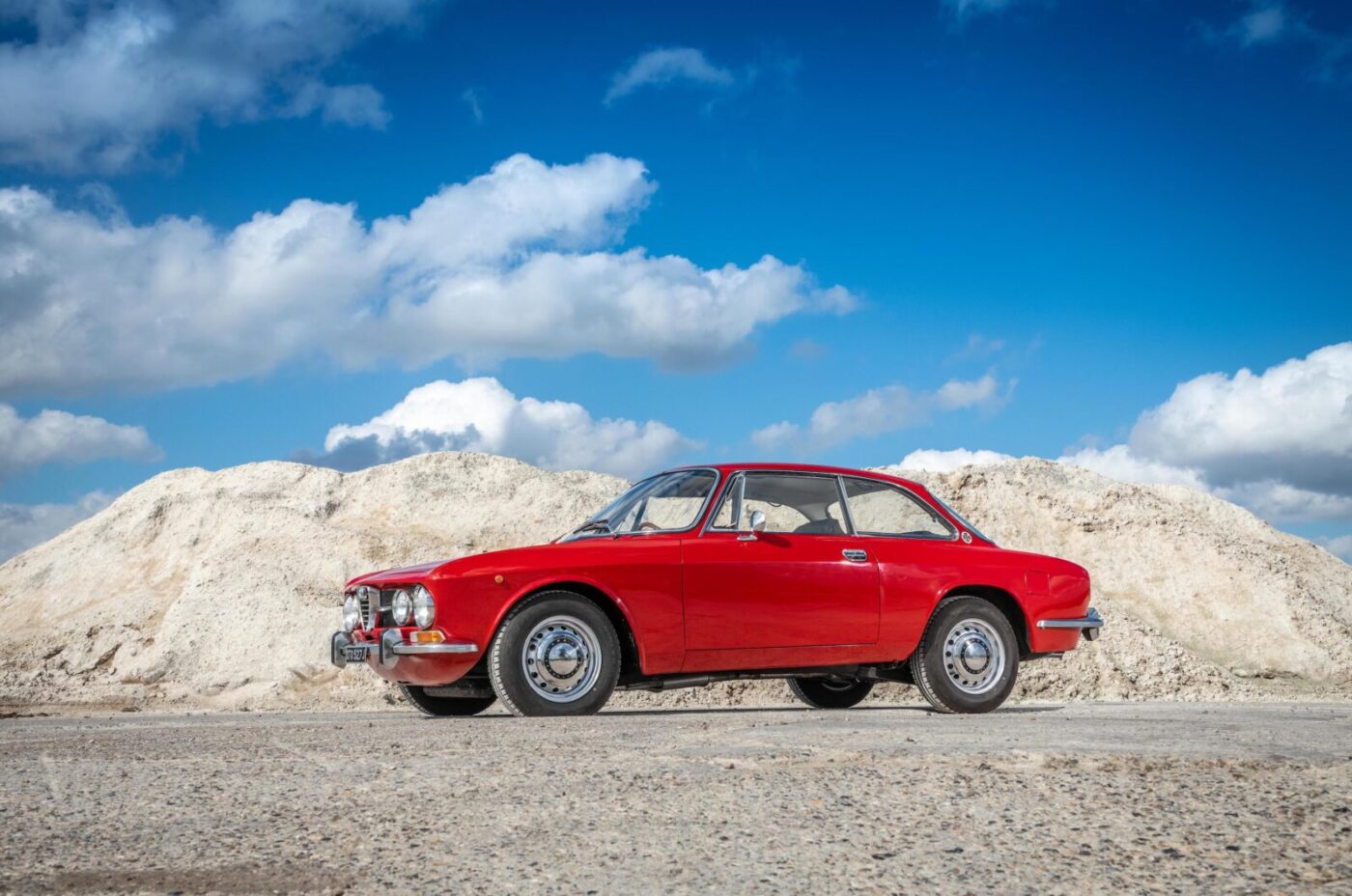
Flawed DeLorean
While the Alfa coped with the journey fine, the DeLorean was, according to Malcolm, flawed from the start.
“It was very sad really,” he says. “The design concept was flawed. We did a lot of rig testing work on the chassis, which eventually highlighted various problems, such as stainless steel fatigue issues.
“I also did a little bit of work on the Esprit Turbo and on the Lotus Sunbeam. Colin Chapman was still there at the time, and it was great fun to work there.”
When the DeLorean project at Lotus ended in 1981, Malcolm needed to find another job, but the one he landed happened to be 285 miles away from where he’d made his home in Norfolk.
“My next job was in Blackpool for an exhaust system company,” he says. Cue more hard work for the Alfa, which was still metallic green at the time.
“I worked during the week and came home at weekends. After a few weeks of travelling up on Sunday nights, I realised it didn’t give me very much of a weekend so I would drive up on a Monday morning.
“The challenge was to get there for 8am on a tankful of petrol. I had to balance the two things! In those days, nothing came past me except the odd sales rep in a Ford Capri.”
This carried on for a few months until Malcolm found a house in Lytham St Annes, and finally the Alfa could enjoy a more normal commute.
READ MORE ABOUT SOME OF OUR GREATEST CLASSIC CARS WITH

A series of articles on our Cult Classics site.
Well-earned rest
After being made redundant, Malcolm was offered a job at another exhaust systems company in Burnley, which came with a company car, granting the Alfa a well-earned rest having clocked up 90,000 miles.
“I took it off the road and started work on it,” he says. “I decided to do what was necessary, which was just some minor welding, and I decided to rebuild the engine for some reason.
“I didn’t think it really needed it, but for some reason decided I was going to do that. I stripped it all apart, but the only thing I fitted was a new oil pump and a new set of piston rings, then put it back together again. It must have been looked after in the past.”
It was then that Malcolm realised just how much engineering work had gone into the 1779cc unit, which produced 132bhp, enough to propel the car to 60mph in just 9.5 seconds.
“There’s the cast iron ‘wet’ cylinder liners, the close tolerances they used, the robust cast steel crankshaft, nitrided from standard – people never used to do that,” he says. “The exhaust valves were sodium-filled for improved heat dissipation, the same as a Rolls-Royce Merlin engine.”
Malcolm self-administered a coat of red paint more in keeping with the Alfa’s image, and used assorted parts scavenged from a rotting 1750 GTV found in a nearby garden.
“My son Andy rode his bike home from school one day, and said ‘there’s a car just like yours down there’,” he says.
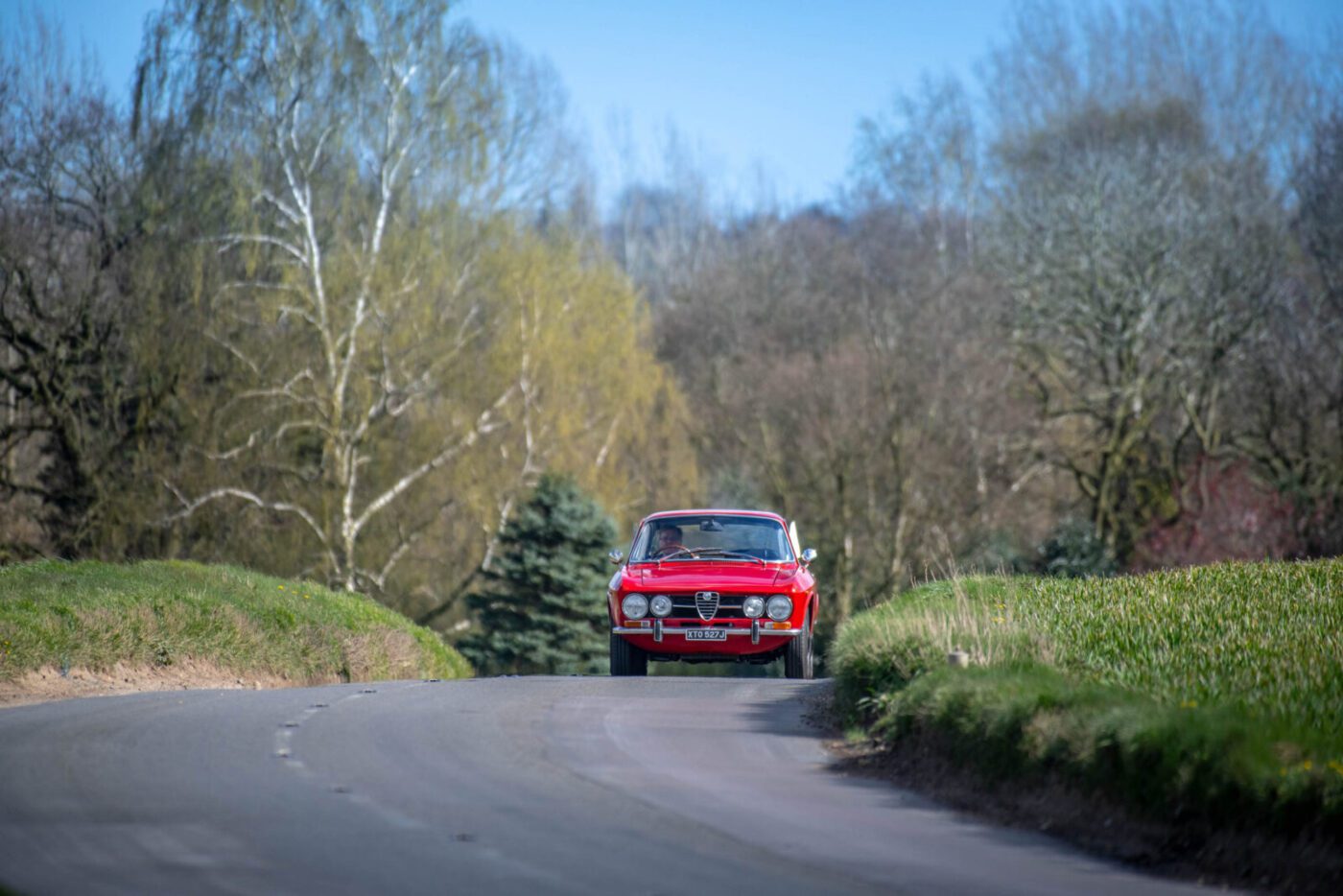
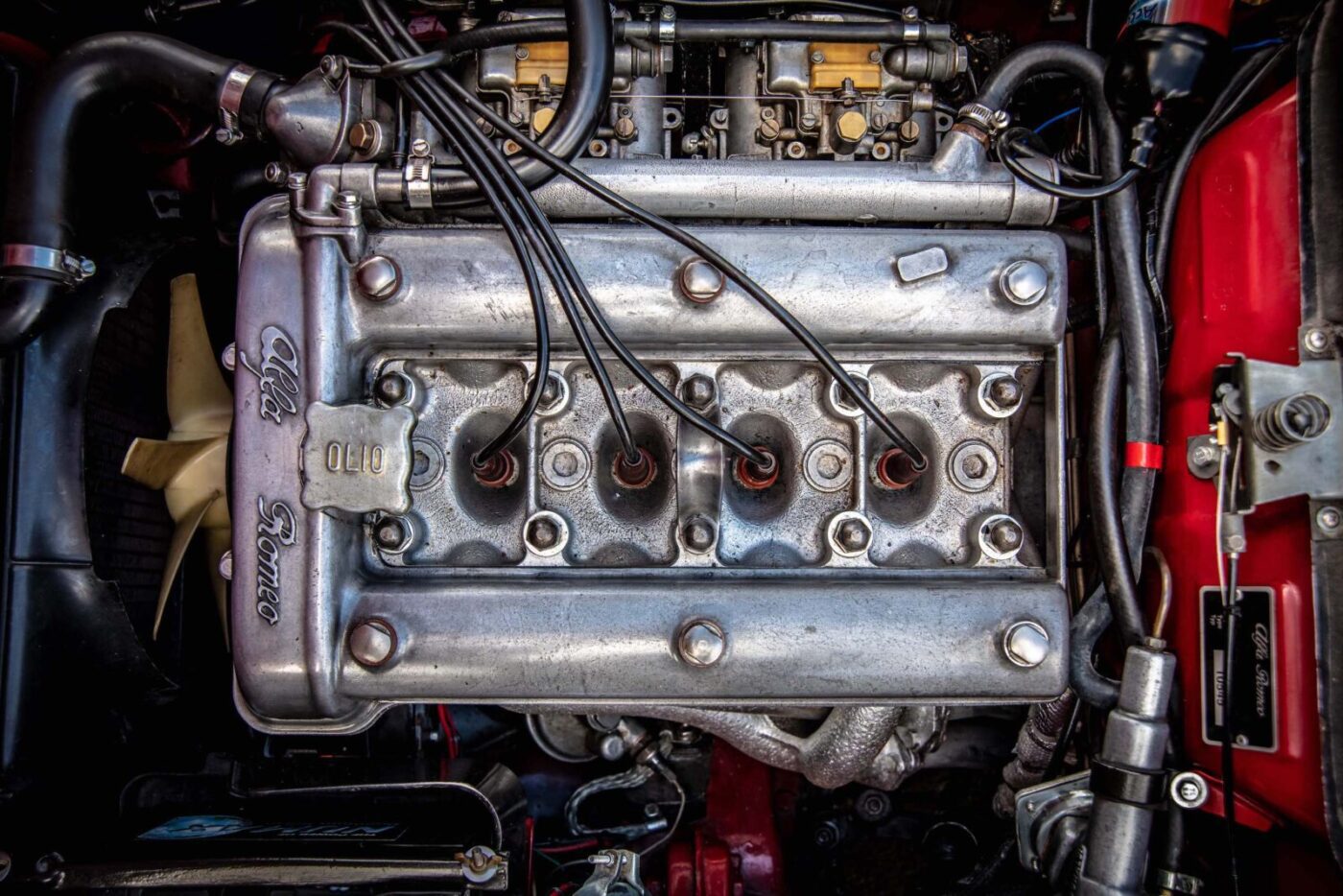
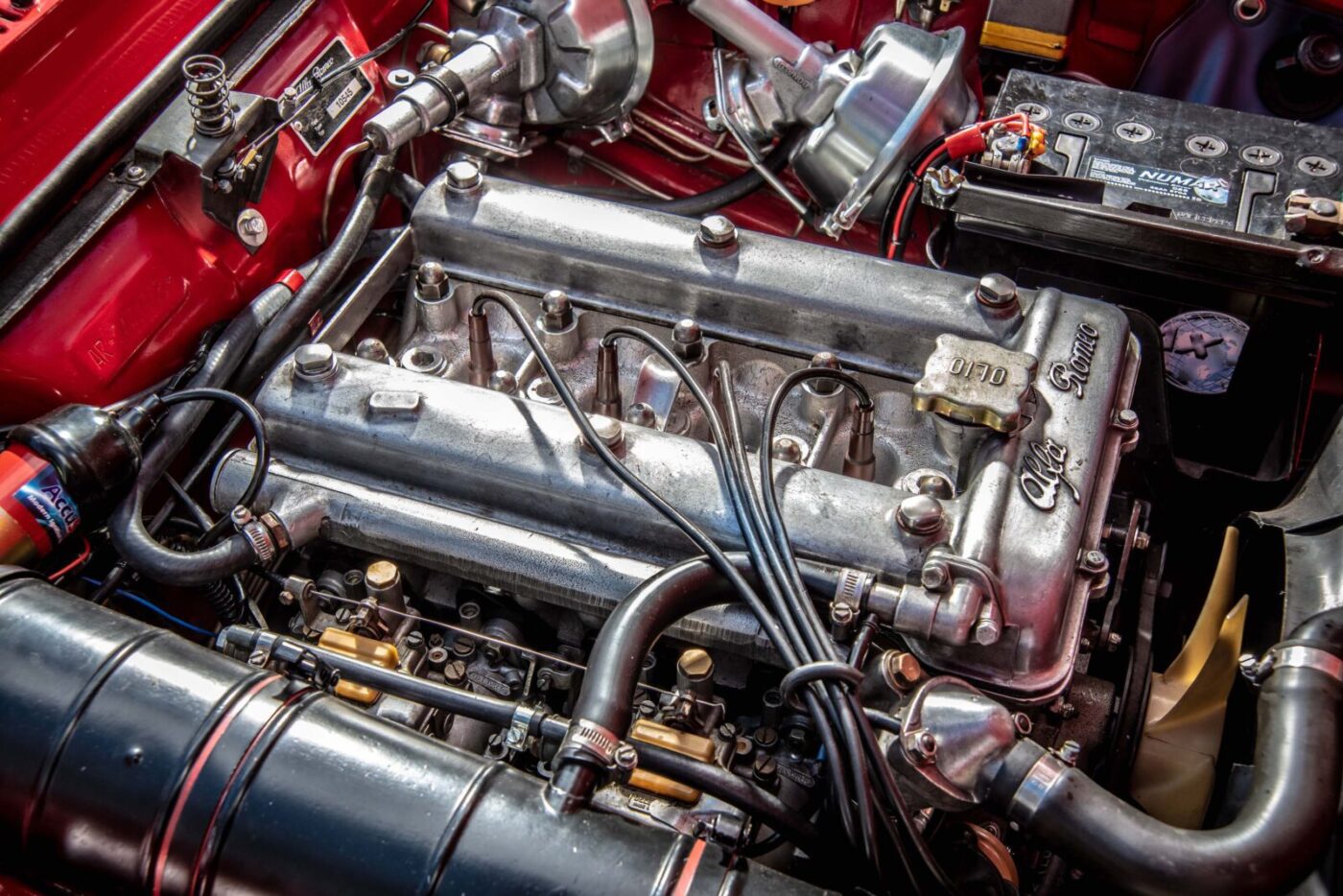
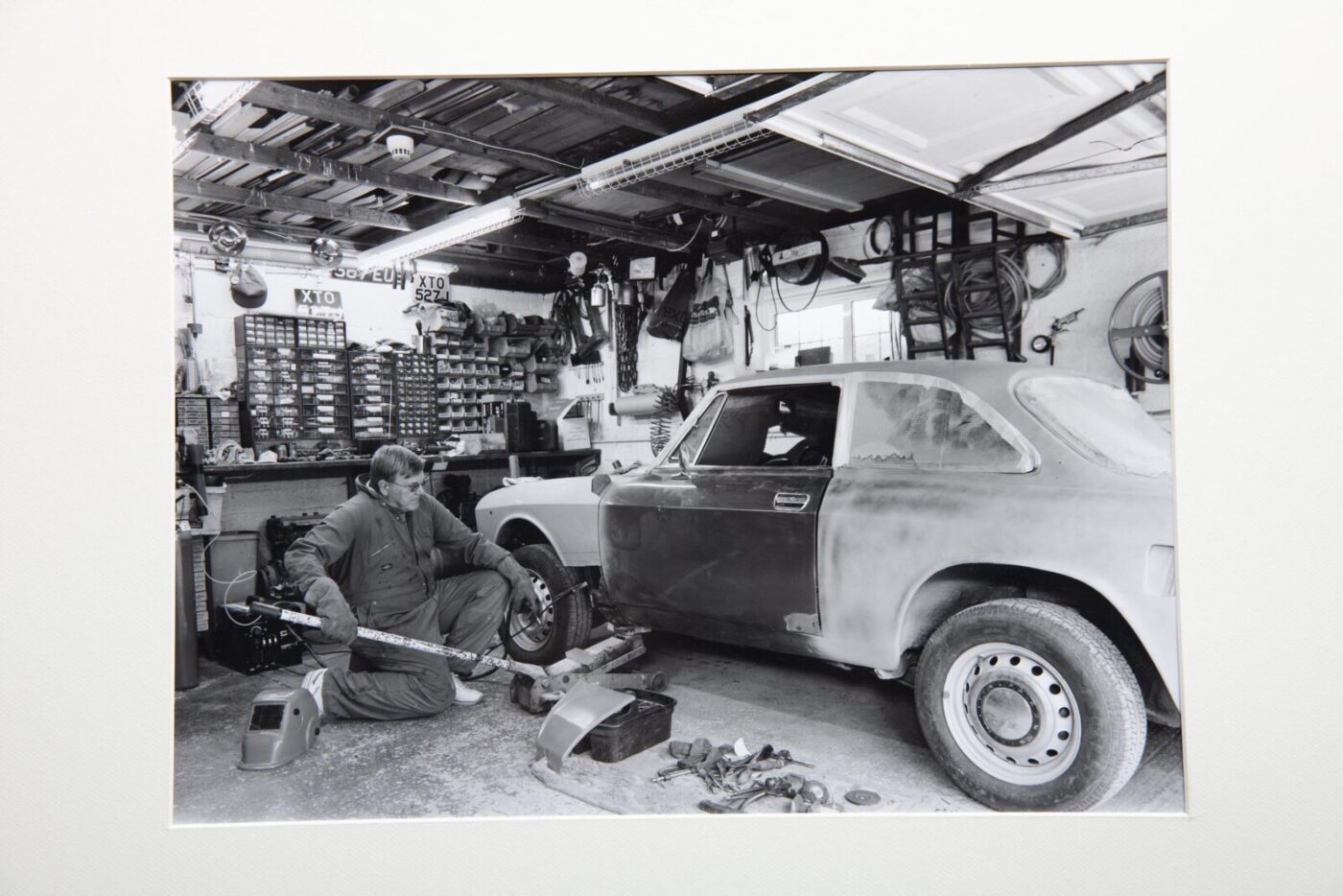
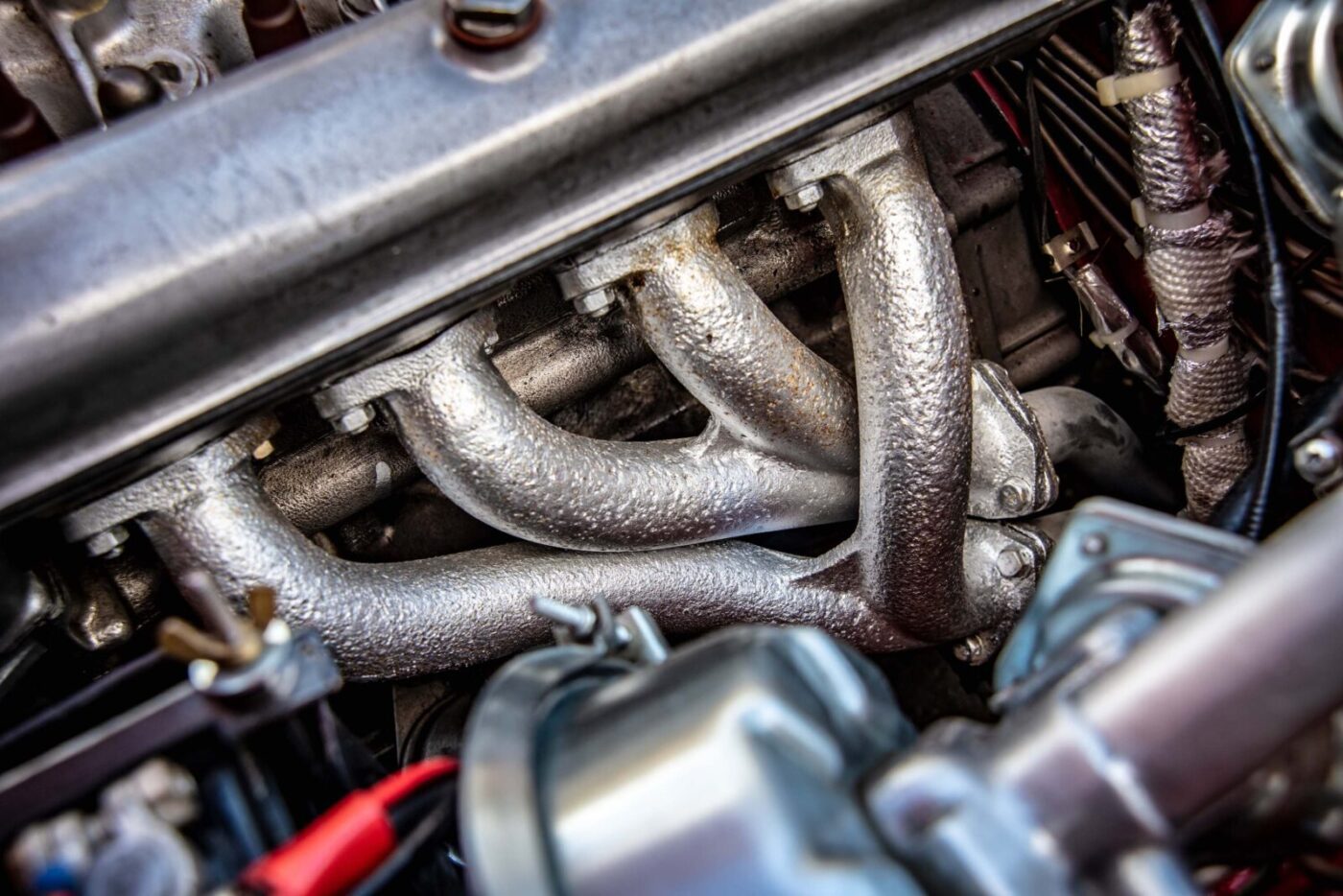
Rotting in the garden
“I said ‘no, it won’t be exactly the same’. Eventually I did have a look and he was right! So I bought it off this bloke – he was just letting it rot in the garden. It was a valuable source of spares, but I could not move it so I unbolted everything and brought it over over a period of weeks.”
As well as Malcolm’s two boys, Pam had two daughters of a similar age, and all four would bundle into back in the days before rear seatbelts, and health and safety.
“They were all seven or eight years old, and they’d all cram into the back seats,” says Malcolm. “Pam had to drive because of the leg room in the back.
“We’ve been to the seaside like that, and also took the car camping once, fitting a tow bar to tow a trailer tent. I’d bought a Citroen GS estate to restore, but it wasn’t quite ready when we went camping.”
The Alfa’s second, and more thorough, restoration started about 10 years ago, when Malcolm was still living in Lytham.
“This time it had to be stripped right down and everything had to come off, and all the bushes, suspension arms etc were shot blasted and painted,” he says.
“I did a lot more digging around under the floor and the boot area etc, and replaced one of the doors for a better door.”
Before the car was finished, about five years ago Malcolm and Pam decided to move back to Norfolk to be closer to Pam’s daughters and grandchildren.
‘I was determined to finish it’
“It was just a rolling chassis, the body was still being prepared,” says Malcolm. “My son organised bringing it up here on a trailer and I finished it off up here once the garage was built, about two years ago. I was determined to finish it!”
Not that it’s ever truly finished, as Malcolm explains.
“Once it was back on the road, I noticed all sorts of things I needed to do, and still do even now,” he says. “I’m going to try to get it as good as I can, not because I’m a perfectionist, but because it’s not as good as it could be.
“I’ve got to keep pushing on and getting it totally finished because I know I’m going to keep it. What takes the time is all the little details, like getting the windows to work properly and getting the glass to seal and the doors to fit anything like as good as they should do.
“You have to bear in mind though that this is a pre-CAD design, and the car doors and panels never fitted like they do on a modern car.”
Apart from the odd additional dial on the dashboard for convenience, Malcolm has kept the car as original as possible, with any modification upsetting its finely-balanced ride.
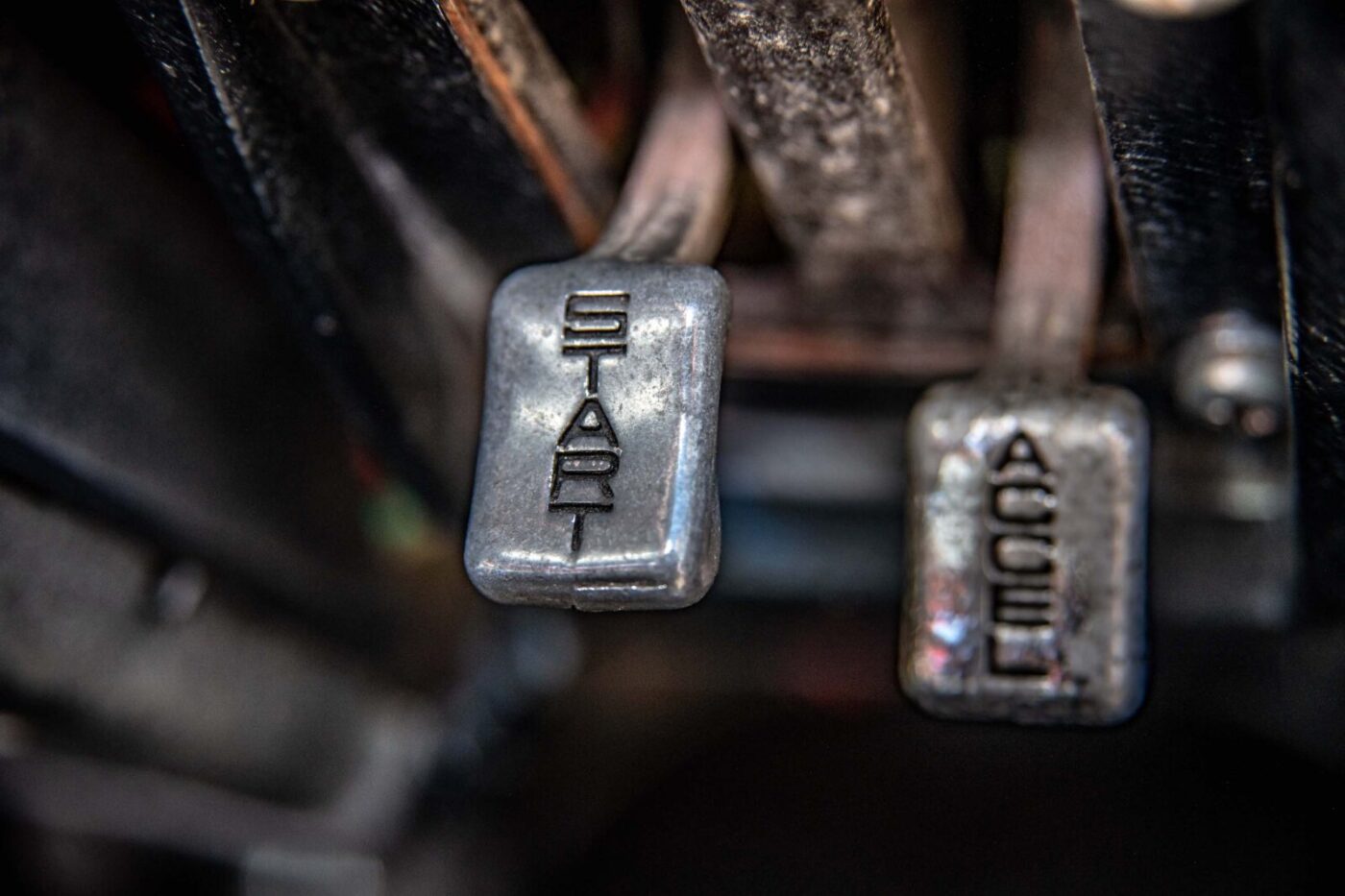
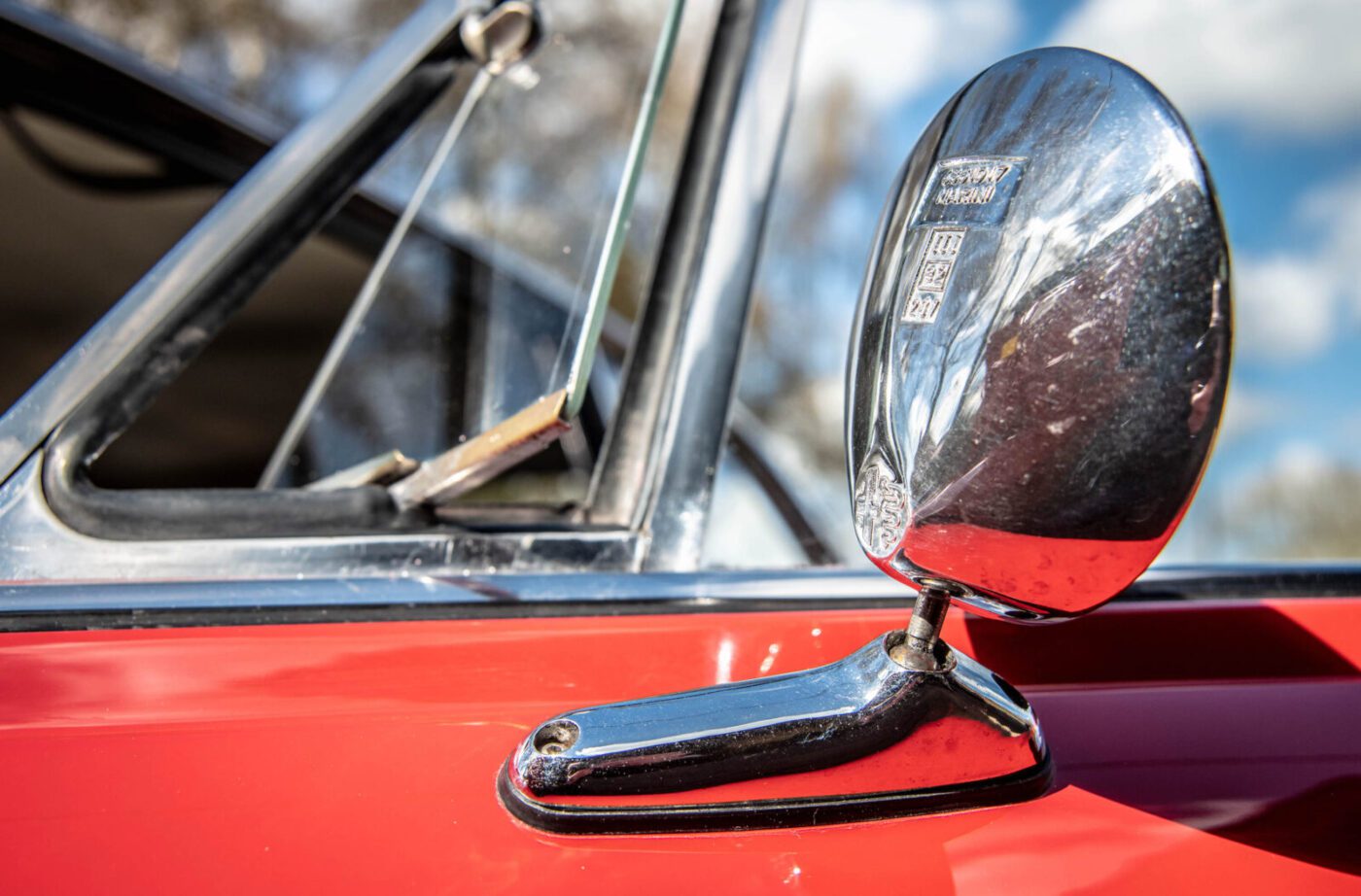
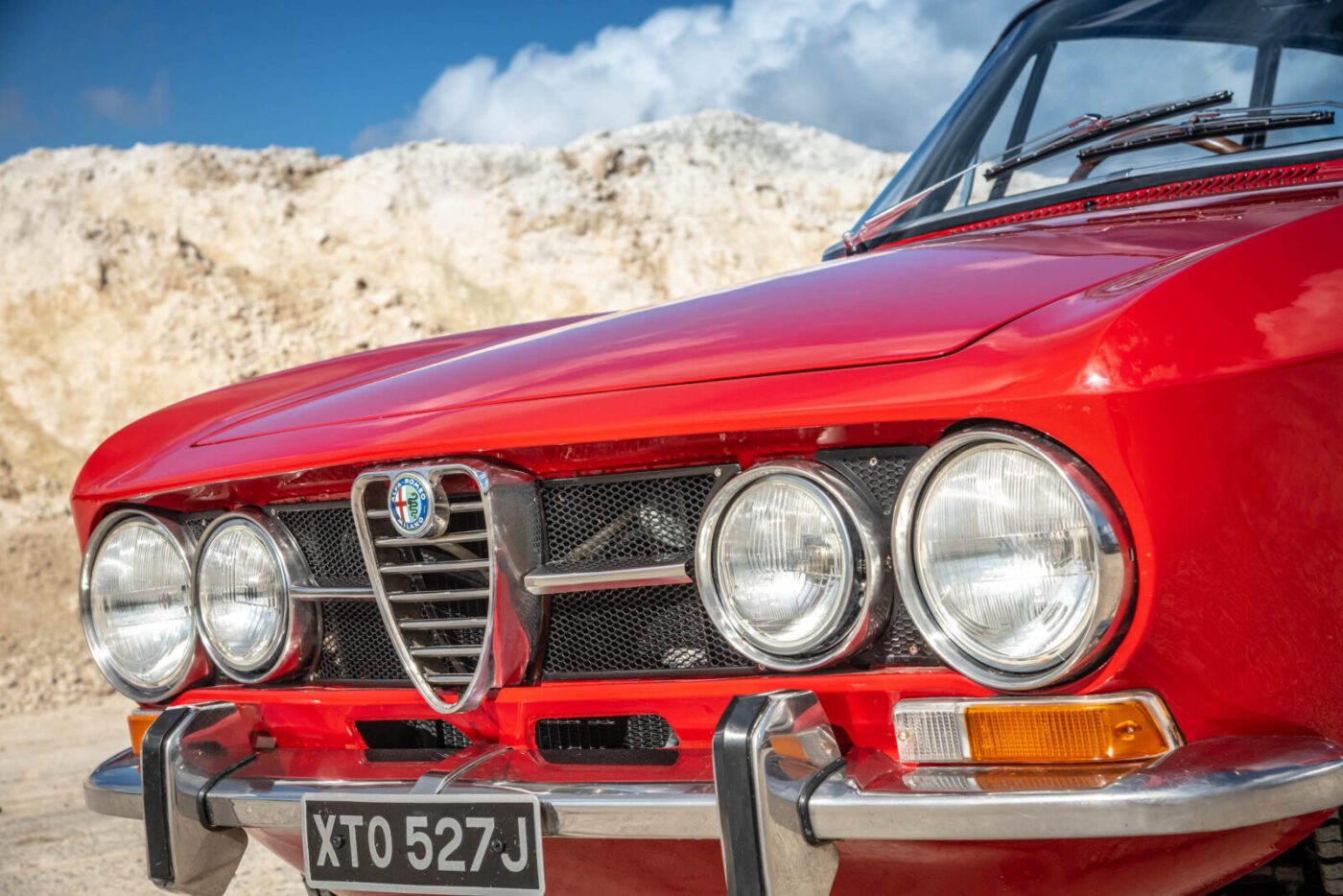
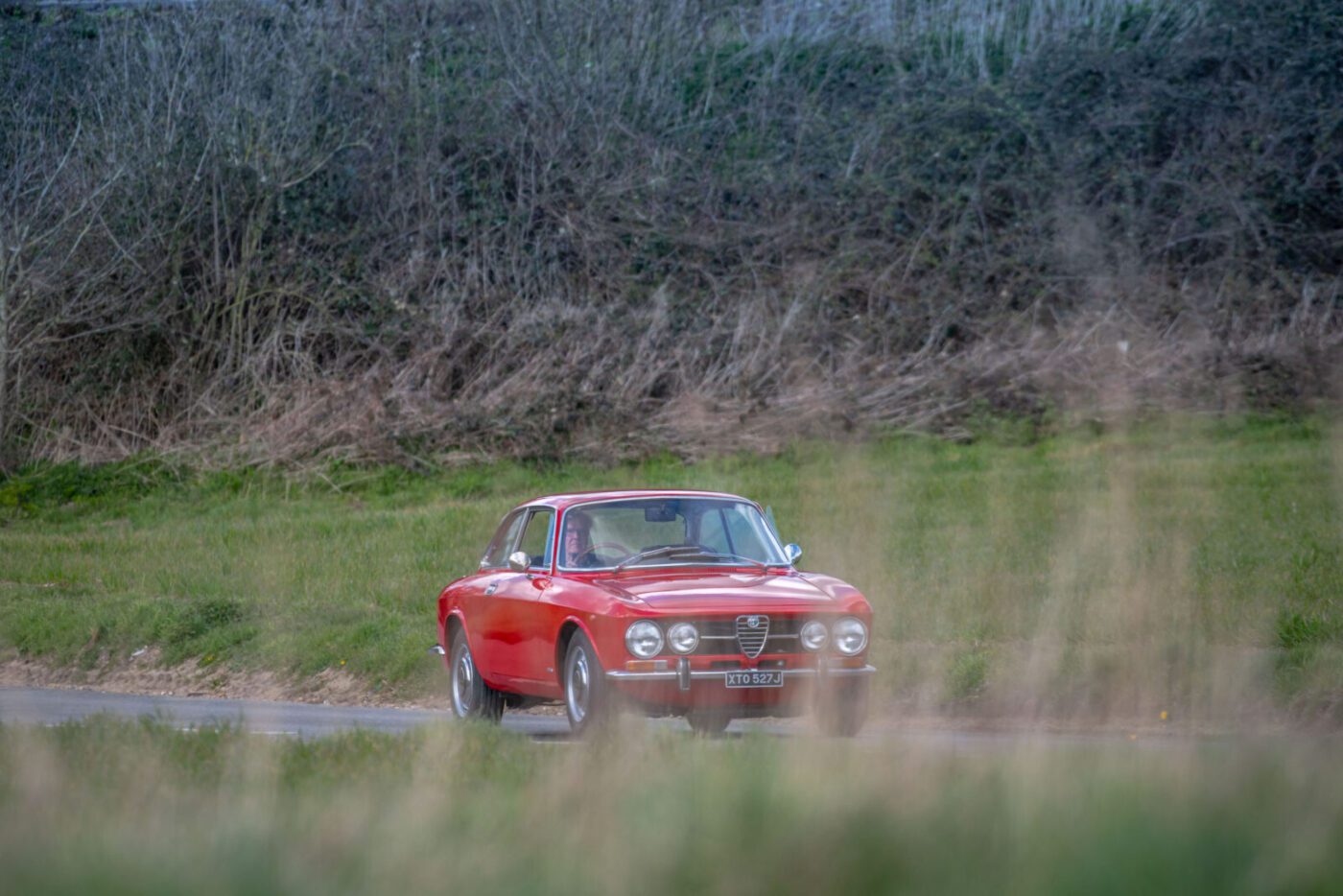
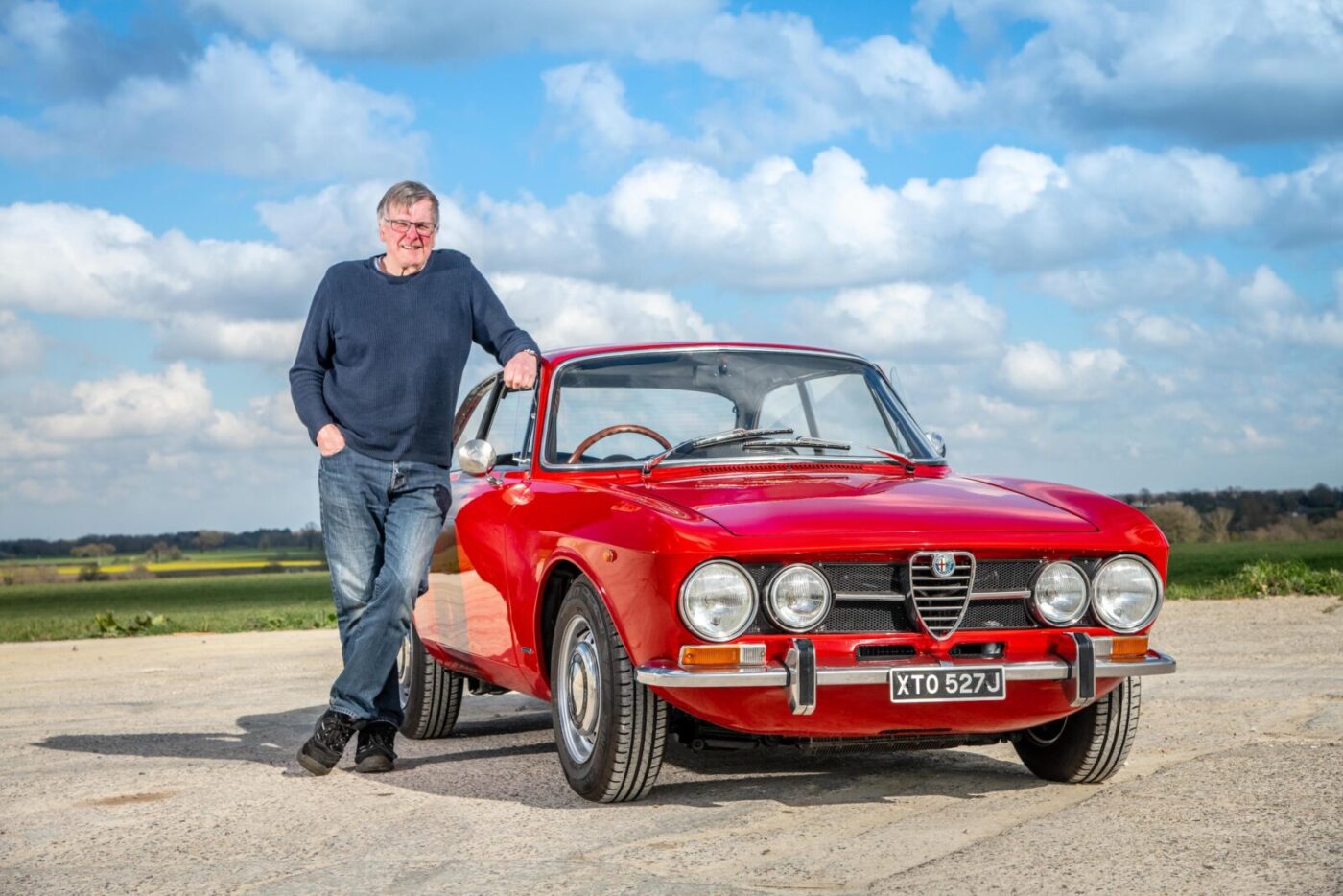
Right first time
“Anything you do to go away from the standard spec produces some side effects,” he says. “For example, if you fit stronger springs, it gets bumpy and hoppy. There are negatives to everything you do – they seem to have got it right first time.”
As well as the 1750, Malcolm also owns a left hand drive 1960s Alfa Romeo Spider, bought on impulse as a restoration project more than 15 years ago, and an Alfa 166.
Both cars may soon be sold, leaving Malcolm more time and space to finish off all those little jobs to make the 1750 as good as it can be.
These days, the car he bought for £600 could be worth around £30,000 – some are advertised for even more – while rough examples sell for about £10,000.
“Its value is irrelevant to me,” he says, the future all about improving the car and keeping hold of it all the while he can still enjoy the odd day out driving in nice weather.
Eventually it will pass to his sons – but he can’t be sure they won’t sell it…
“That’s what will probably happen, it will just be sold, but I won’t be worrying about that because I won’t be here,” he smiles.
“The boys are into more modern cars, and it doesn’t really mean anything to them.”
It clearly means plenty to Malcolm, and one day he might even be happy enough to called it “finished”…

